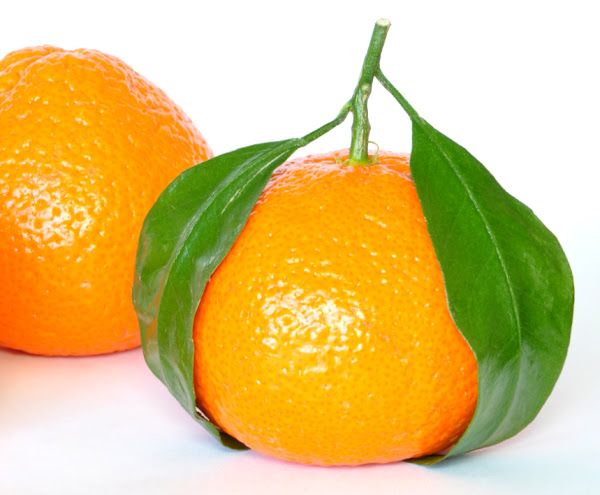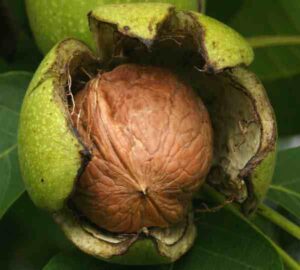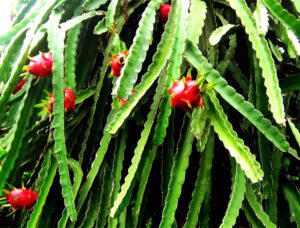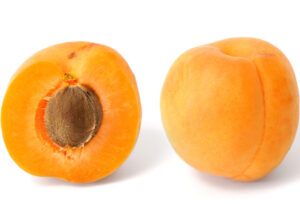Commercial orange farming is not a new business idea. It’s a common agribusiness throughout the world. And people are growing this fruit for making profits from the ancient time.
The orange actually is the fruit of various citrus species in the family Rutaceae (it primarily refers to Citrus × sinensis) which is also called sweet orange, to distinguish it from the related related Citrus × aurantium, referred to as bitter orange.
The orange is actually a hybrid between pomelo and mandarin. The chloroplast genome, and therefore the maternal line, is that of pomelo. The sweet orange has had its full genome sequenced.[1]
The orange originated in a region encompassing Southern China, Northeast India and Myanmar. As of 1987, orange trees were found to be the most cultivated fruit tree in the world.
Orange trees are generally grown widely in tropical and subtropical climates for their sweet fruits.
You can enjoy fresh orange or processed for it’s juice or fragrant peel. As of 2012, sweet oranges accounted for approximately 70% of citrus production.
In the year of 2019, around 79 million tonnes of oranges were grown worldwide, with Brazil producing about 22% of the total, followed by China and India.
How to Start Orange Farming Business?
Orange plants are generally very strong and hardy. And caring them is generally easy. You will be able to take good care of them, even if you are a beginner.

Starting commercial orange farming business is very easy. Here we are trying to describe more information about starting and operating this business from planting, caring to harvesting and marketing.
Step 1. Select Good Location
First of all, select a very good location for starting your orange farming business. Orange trees are generally grown in a wide range of soils ranging from sandy loam or alluvial soils.
Deep soils with a pH range of 5.5 to 7.5 are considered ideal for orange farming. Although, orange plants can also be grown in a pH range of 4.0 to 9.0.
Adequate sunlight and availability of water is a must for growing orange plants, and also for having good production.
Step 2. Land Preparation
You have to prepare the land perfectly for having good production. Perfect land preparation is the key to successful orange farming business.
Land should be ploughed, cross ploughed and leveled before planting. Terrace planting is done on hills. High density planting is possible in hilly areas.
Add as much organic fertilizers as you can while preparing the land. Adding organic fertilizers is a must for good orange production.
Step 3. Climate Requirement For Orange Farming
Orange trees grow successfully in all frost-free tropical and sub-tropical regions. Annual rainfall of 100-120 cm, and temperature ranging from 10°C to 35°C is suitable for orange farming.
Step 4. Choose the Right Variety/Cultivars
There are many varieties or cultivars of oranges available throughout the world. Main varieties are Common oranges, Navel oranges, Blood oranges, Acidless oranges and Hybrids.
Each of these varieties have numerous sub or similar varieties. Here we are listing the name of some popular common orange varieties.
- Valencia
- Hamlin
- Bahia
- Bali
- Belladonna
- Berna
- Biondo Comune (“ordinary blond”)
- Biondo Riccio
- Byeonggyul
- Cadanera
- Calabrese or Calabrese Ovale
- Carvalhal
- Castellana
- Charmute
- Cherry Orange
- Clanor
- Dom João
- Fukuhara
- Gardner
- Homosassa
- Jaffa orange
- Jincheng
- Joppa
- Khettmali
- File
- Kona
- Lima
- Lue Gim Gong
- Macetera
- Malta
- Maltaise Blonde
- Maltaise Ovale
- Marrs
- Medan
- Midsweet
- Moro Tarocco
- Narinja
- Parson Brown
- Pera
- Pera Coroa
- Pera Natal
- Pera Rio
- Pineapple
- Pontianak
- Premier
- Rhode Red
- Roble
- Queen
- Salustiana
- Sathgudi
- Seleta, Selecta
- Shamouti Masry
- Sunstar
- Tomango
- Verna
- Vicieda
- Westin
- Xã Đoài orange
Navel Orange Varieties
- Bahia
- Dream navel
- Late Navel
- Washington or California Navel
Blood Orange Varieties
- Maltese
- Maro
- Sanguinelli
- Scarlet navel
- Tarocco
Step 5. Purchase Plants
After selecting the right variety for your business, you have to purchase plants from any of your nearest nurseries. Orange plants are generally propagated by seeds and also vegetatively propagated by T-budding.
Step 6. Planting
Seedlings are generally planted in the month of July-August after the commencement of monsoon. Orange plants are generally planted in pits of 0.5 m x 0.5 m x 0.5 m size in a square system with spacing of 4.5 meters to 6 meters accommodating 350-450 plants per hectare. Spacing of 6 m x 6 m accommodating 120 plants per acre has been considered ideal for the present model.
Step 7. Caring
Taking good care of the plants is very important for better growth of the plants and also for better fruit production. Orange plants are very strong and hardy, and they generally require less caring. Here we are trying to describe more about the caring process of orange plants.
Fertilizing
Providing adequate fertilizers is very important for getting better production. For 1-3year old crop, apply well decomposed cowdung@10-30kg, Urea@240-720gm per tree.
For 4-7year old crop, apply well decomposed cow dung@40-80kg, Urea@960-1680gm and SSP@1375-2400gm per tree. For eight years and above crop, apply cowdung@100kg, Urea@1920gm and SSP@2750gm per Tree.
Apply whole amount of cow dung during December month whereas apply Urea in two parts, apply first of Urea in February, and second dose in April-May month. At time of applying first dose of Urea, apply whole dose of SSP fertilizer.
If fruit drop is observed, to control excessive fruit drop, take spray of 2,4-D@10gm in 500Ltr of water. Take first spray in March end, then in April end. Repeat the spray in August and September end. If cotton is planted in nearby field of citrus, avoid spraying of 2, 4-D, instead take spray of GA3. [2]
Watering/Irrigation
Water or irrigation requirement of orange tree is very high due to it’s evergreen nature throughout the year. Although, exact amount of water requirement depends upon the type of soil.
Adequate watering should be provided at the time of flowering, fruit set and fruit development stage. Orange plants can’t tolerate water logging, so try to avoid water logging. And water of irrigation should be free from salts.
Mulching
Mulching not only helps to retain moisture but also helps to prevent weeds. You can use organic materials for mulching.
Weeding
Weeds consume nutrients from the soil. So, it’s very important to control weeds. You can control weeds by hand-hoeing and also by chemically.
If you prefer chemical method, use glyphosate at the are of 1.6 liter per 150 liter of water. Use glyphosate only on weeds not on orange plants.
Step 8. Control Pests and Diseases
Like many other crops, orange plants are also succeptible to some pests and diseases. Here we are trying to describe more about the common pests and diseases of the orange plants.
Common diseases of the orange plants are citrus canker, gummosis, powdery mildew, black spot, collar rot, zinc defieiency and iron deficiency. And common pests and insects of the orange plants are aphids and mealy bugs, orange shoot borer, scale insects, cutrys ostkka and leaf miner.
Iron Deficiency
Color of the leaves of the infected trees changes to yellowish green. This deficiency mostly occurs in case of alkaline soils. Iron chelates should be provided to the plants.
Zinc Deficiency
Zinc deficiency in orange plants is very common. It is notified as yellow areas between main lateral veins and midrib of the leaves. Twings may die back, dense shoots having stunted bushy appearance is commonly seen.
Fruits tend to become pale, elongated and become smaller in size. Provide zinc sulphate by dissolving 2 table spoons in 10 liters of water. This should be sprayed thoroughly on all the tree branches and foliage.
Collar Rot
Collar rot is caused due to fungus, and affects the bark on tree trunk. Bark begins to rot and forms a band just above ground surface (and this band decay gradually and covers the whole trunk). Cut and scrape away the soft, infected bark to clean the trunk of the tree to protect the trees from collar rot.
Mixture of copper spray or Bordeaux mixture should be painted on the affected part of the tree. Remove all the weak, diseased and congested tree branches to ensure proper air circulation.
Black Spot
Black spot is also a fungal disease. Common symptoms of this diseases are circular, dark spots on fruits. Copper spray in early spring should be sprayed on foliage helps to cure plants from black spots. It should be repeated in 6 weeks again.
Powdery Mildew
White cottony powdery growth is noticed on all aerial plant parts, and the leaves tend to become pale yellow and crinkle. Distorted margins are also seen. Upper surface leaves are more affected.
To control powdery mildew, affected plant parts should be removed and destroyed completely. Carbendazim, three times at 20-22 days of interval helps to control this disease.
Gummosis
Exudation of gum from the bark of the tree is the characteristic symptom of gummosis disease.
This disease can be managed through proper selection of site with proper drainage, use of resistant varieties etc. Drench the soil with 0.2% metalaxyl MZ-72 + 0.5% trichodermaviride, which helps to control this disease. Bordeaux mixture should be applied to plant upto 50-75 cm height from ground level at least once in a year.
Citrus Canker
Plants have lesions on stems, leaves and fruits with brown, water-soaked margins. This disease can be controlled by cuttin the affected branches and twigs.
Spraying of Bordeaux mixture @1%. Aqueous solution of 550ppm, Streptomycin Sulphate is also helpful in controlling citrus canker.
Aphids and Mealy Bugs
Aphids and mealy bugs are small sap sucking pests. Bugs are generally present on the underside of the leaves. You can use synthetic pyrethroids or pest oil to control aphids and bugs.
Orange Shoot Borer
Affected plants tend to lose it’s vigor, and it is a very serious pest of the citrus plant. It can be controlled by destroying the affected branches.
Kerosene oil/petrol injection can also help to control this insect. Monocrotophos (5ml/20ml of water) also helps to control orange shoot borer.
Scale Insects
Scale insects can be controlled with the introduction of indigenous parasitic wasps. Neem oil is also effective against them. Spraying of Parathion (0.03%) emulsion, dimethoate 150ml or malathion @0.1% are effective against scale control.
Leaf Miner
Best management for leaf miner is to leave it alone and let the natural enemies to feed upon them and parasitize their larvae. It can also be controlled by spraying Phosphomidon @1ml or Monocrotophos @1.5ml per 3-4 times fortnightly. Pheromone traps are also available for detecting leaf minor moths.
Citrus Psylla
Citrus psylla are juice sucking pests, and damage is mainly caused by Nymphs. It can be controlled by pruning of the affected plants. Spraying of Monocrotophos-0.025% or carbaryl- 0.1% can also be helpful.
Step 9. Harvesting
You can start harvesting when the fruits attain proper size, shape along with attractive color. Depending upon variety, fruits are generally ready for harvesting in Mid-January to Mid-February.
Timely harvesting is very important. Because too early or too late harvesting will give poor quality fruits. Harvesting is generally done by hand.
Post Harvesting Tasks
Post harvesting tasks include grading, washing the fruits with clean water and then dip fruits in Chlorinated water at the rate of 2.5 ml per Liter water.
After that, partially dry them. To improve appearance along with to maintain good quality, do Citrashine wax coating along with foam. Then these fruits are dried under shade and then packing is done. Fruits are packed in boxes.
Yield
Yield vary depending on the age of the plants. You can expect around 50 fruits per tree from their 5th year of age. Fruit production stabilizes in the 8th year. Average production is about 700 to 800 fruits per tree after stabilization.
Step 10. Marketing
Marketing oranges is very easy. You can easily sell your oranges in your local market. You can also target some large companies for selling your products.
These are the common steps and ways for starting and operating a successful orange farming business. Hope this guide has helped you! Good luck and may God bless you!





